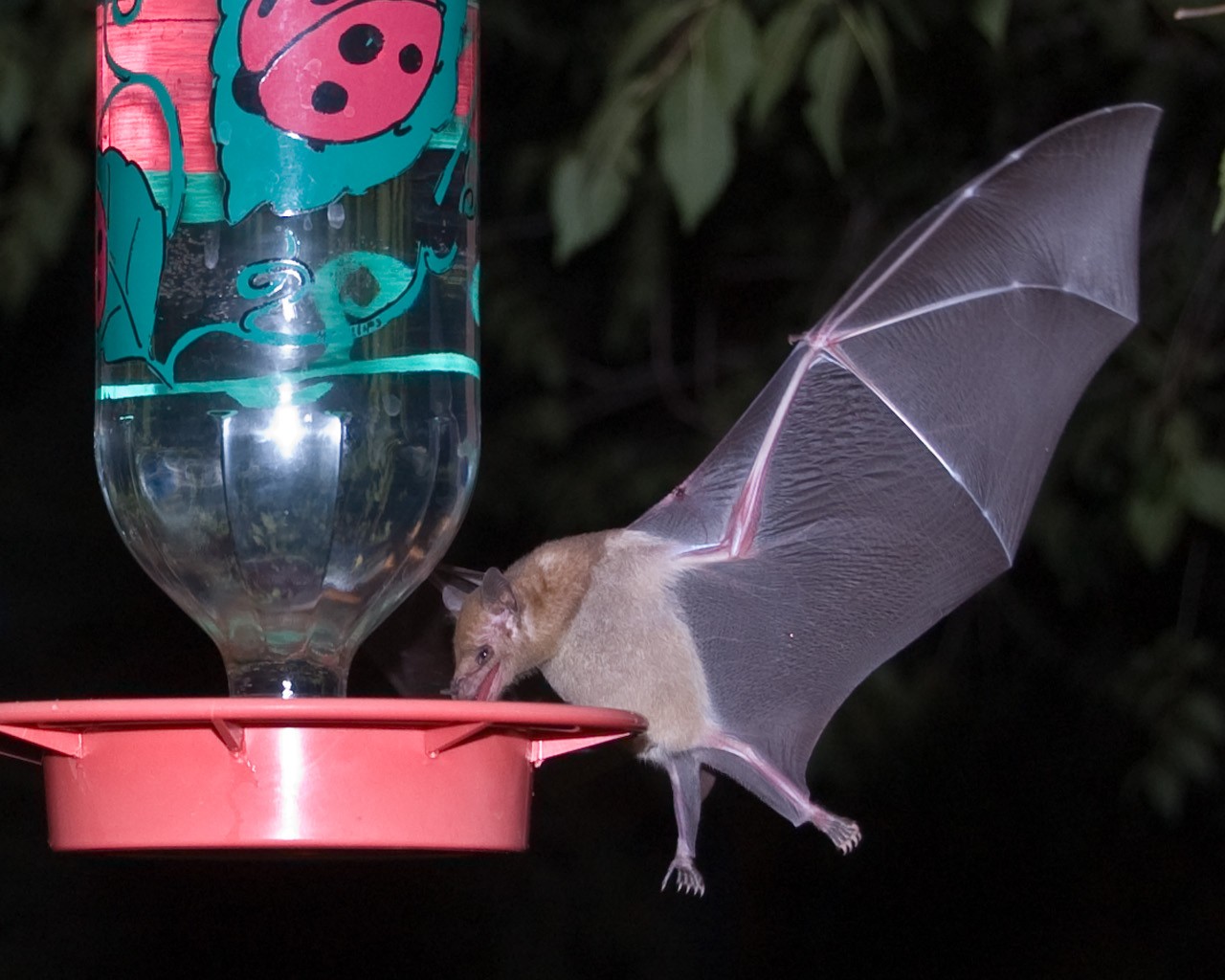Mexican long-tongued bat
A species of Mexican long-tongued bat Scientific name : Choeronycteris mexicana Genus : Mexican long-tongued bat
Mexican long-tongued bat, A species of Mexican long-tongued bat
Scientific name: Choeronycteris mexicana
Genus: Mexican long-tongued bat
Content
Description People often ask General Info
 Photo By Mexican_Long-Tongued_Bat_at_hummingbird_feeder.jpg , used under CC-BY-2.0 /Cropped and compressed from original
Photo By Mexican_Long-Tongued_Bat_at_hummingbird_feeder.jpg , used under CC-BY-2.0 /Cropped and compressed from original Description
The Mexican long-tongued bat is medium in size in the family Phyllostomidae. Its pelage can be up to 7 mm long and is typically gray to brownish but can be paler on the shoulders. Wings are darker brownish gray with paler tips. The ears will also have the same coloration as the body and will vary in size. The tail is short. Body weight is 10-20 g, with a maximum of 25 g in pregnant females. The species has a distinctly elongated snout tipped with a roughly 5 mm-long nose-leaf. The tongue is long, narrow and extendible, specialized for nectar feeding. It is covered with tiny hairlike papillae, which become more horny towards the base of the tongue. The skull is up to 30 mm long, with the rostrum making up 40-50% of total length. Juveniles have 22 deciduous teeth, which give way to 30 adult teeth. Like all microchiroptera, Mexican long-tongued bats use echolocation. They are especially sensitive to high frequencies (65–80 kHz) but have been found to respond to lower frequencies in the 5 kHz range. 
People often ask
General Info
Lifespan
8-10 years
Diet
Mexican long-tongued bat species, known as bats, primarily subsist on a nectar-based diet. Their food preference includes the nectar of night-blooming cacti and agaves, supplemented by pollen and occasionally insects.
Appearance
Mexican long-tongued bat is a medium-sized bat with a robust body shape. Its fur is thick and soft, rendered in dark brown hues which can lighten to buffy color at the edges. Its most noticeable features include a long snout, prominent ears, and a broad, leaf-shaped nose. The wings are wide and tail short. Notably, its wing membranes extend to the ankle, unlike other species. There are no significant differences in appearance due to age, gender, or subspecies.
Behavior
The species roosts in caves or abandoned buildings during the day. Individuals do not cluster together, hanging 2–5 cm apart suspended by a single foot, which allows them to rotate on their perch. If alarmed, they fly towards the opening and light rather than deeper into the roosting site. Females will carry young but only from one shelter to another. Migrations follow regional nectar availability. A key factor for migration in glossophagines over larger distances seems to be a large body size that permits storing energy for traveling over areas without available food. Following this idea, C. mexicana might be the larger, migrating version of the small, resident sister taxon Musonycteris harrisoni. Resident species (compared to a migrating species) may know their relatively small home ranges on a fine-grained level, including also locations of less-profitable food plant species. Migrating species, on the other hand, tend to focus on predictably flowering, high-quality resources (von Helversen and Winter 2003). 

 Photo By Mexican_Long-Tongued_Bat_at_hummingbird_feeder.jpg , used under CC-BY-2.0 /Cropped and compressed from original
Photo By Mexican_Long-Tongued_Bat_at_hummingbird_feeder.jpg , used under CC-BY-2.0 /Cropped and compressed from original Scientific Classification
Phylum
Chordates Class
Mammals Order
Bats Family
Leaf-nosed bat Genus
Mexican long-tongued bat Species
Mexican long-tongued bat